SAU T3 Howitzer Motor Carriage: the first "classic" self-propelled gun USA
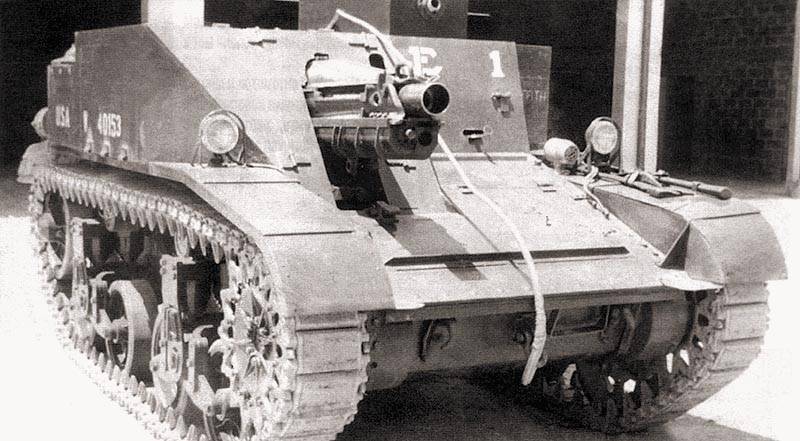
ACS Т3, front view - well observed driver's viewing slot
As a basis for the new self-propelled gun, the newest light tank M1, created by the Rock Island arsenal, was chosen. The characteristics of this combat vehicle, as it was considered, would allow the installation of a 75 caliber mm gun on it and thus make it a full-fledged ACS. Indeed, the T3 project was much more successful than its predecessors. In 1938, the new self-propelled gun reached the army tests, after which it could be put into service.
During the development of the T3 Howitzer Motor Carriage project, the M1 tank chassis underwent some changes related to the installation of a new weapons. At the same time, the authors of the project tried not to make major adjustments to the design of the chassis and hull, which could impede the serial construction of the new self-propelled gun.
The body of the new ACS was proposed to be assembled from 16 (forehead), 13 (sides) and 6 (feed, roof and bottom) thick millimeters of armor plates. Such armor was able to protect the crew and internal units from small arms bullets and shell fragments. The layout of the internal units of the new ACS was typical of pre-war American tanks. In front of the hull placed part of the transmission units and the management compartment with the workplace of the driver. Behind them there was a three-dimensional battle compartment, and in the stern there was a radial 7-cylinder engine Continental R-670 with a power 250 hp. The use of the radial engine and the placement of the transmission under the floor of the combat compartment affected the dimensions of the combat vehicle, reducing its length and increasing its height.
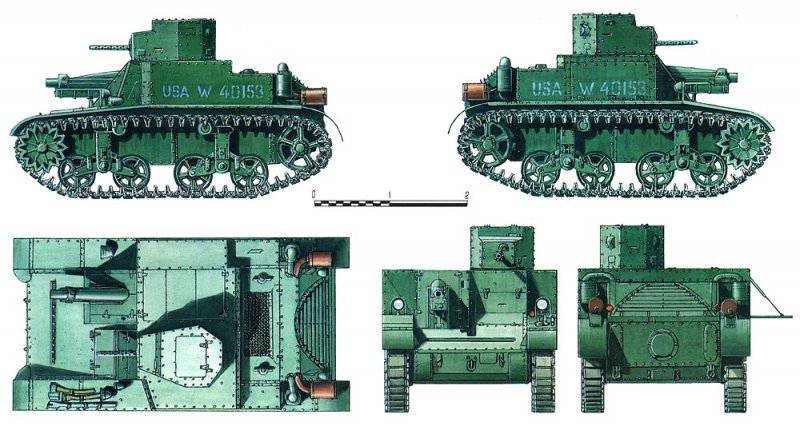
A prototype of the T3 self-propelled artillery, equipped with an 75-mm howitzer М1А1 and a 7,62-mm Browning machine gun. United States, 1938
The chassis of the ACS, borrowed without any changes from the base tank, had four track rollers on each side. They were interlocked in pairs and had a suspension with vertical springs. In the stern of the side there was a steering wheel, in the front - leading with zevochnom gear.
Significant changes undergone base tank hull. In the upper and middle frontal parts of the body provided a large embrasure for the gun. The self-propelled gun received a turret with a machine gun, which was a reduced turret of the M1 tank. The tower was installed at the left side. In the roof of the hull, at the starboard, provided a large commander's hatch for landing and leaving the car. The second hatch commander was in the right side of the hull. Interestingly, the upper hatch had two shutters, and the only side cover was folded down and held by chains in a horizontal position. The driver had to get into his workplace through the double hatch in the frontal parts of the hull. To observe the situation on the march, he could open the upper hinged flap. In a combat situation was supposed to close the hatch and use the viewing slot. A small ring was installed in front of the gap, which could be used as a sight for coarse pickups of the gun by turning the whole machine.
The main weapon of the self-propelled gun was the howitzer M1A1 of caliber 75 mm. The gun was installed on a specially designed gun carriage in the front of the armored hull with a shift to the starboard. The gun was equipped with recoil barriers, as well as a modernized sight. The maximum range when shooting using a panoramic sight was limited to 5 thousand yards (about 4,6 kilometers). At that time it was believed that such indicators of firing range would effectively support the infantry and tanks with fire. Ammunition howitzer consisted of 61 projectile. 36 shots were stacked under the gun, the rest - on the rack at the left side of the crew compartment. For pointing the gun horizontally within a relatively narrow sector, the crew of the automatic control system could open the front embrasure leaves.
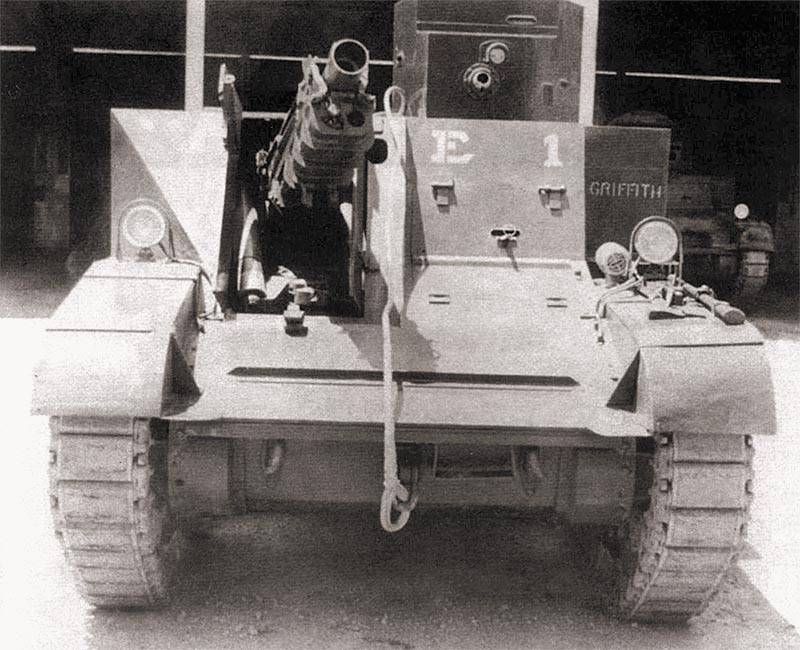
Installation of howitzers in the case of ACS Т3: the embrasure leaves are open, the weapon is in a combat position. The barrel turned on 26,6 degrees in both directions
The crew of a promising self-propelled artillery installation T3 Howitzer Motor Carriage consisted of only two people - the driver and commander. Both crew members were located to the left of the gun, since under the latter almost the entire right half of the armored hull was actually given. The driver was in front of and below the commander. Significant size of the breech howitzer M1A1, as well as a sufficiently large ammunition affected the size of the space for the crew. The driver and the commander had to work in extremely cramped conditions. It should be recognized that the workplace of the driver was a little more convenient than that of the commander. The fact is that the commander, being in a close volume of the combat compartment, was to perform the duties of a gunner and loader. Another unpleasant feature of the ACS T3 was the location of the panoramic sight. This unit was placed on the same level with the breech of the gun. It was assumed that thanks to this, the commander and driver could use the sight. However, it later turned out that the driver, even getting up in his place, would not be able to use the scope normally, and the commander would have to bend over strongly to find the target and aim the weapon at it.
If necessary, the commander of the car was supposed to "move" into an armored turret and fire from a Browning M1918 machine gun. Ammunition machine gun was 3500 ammunition.
In the middle of 1938, the first copy of the new self-propelled gun was handed over to the 7 Cavalry Division for testing. The trials started at the Aberdeen Proving Ground, and later the T3 Howitzer Motor Carriage ACS was tested on other test sites. In May, 1940, the machine took part in the maneuvers of the 3 Army. During the tests, the self-propelled gun passed more than 1400 miles. On the highway, it could accelerate to speeds up to 50-55 km / h. Despite the lower speed in comparison with the base tank M1, the T3 self-propelled gun had sufficient characteristics to operate in some combat formations with other armored vehicles. At the same time self-propelled gun was not without flaws. The placement of the gun with a shift to the right of the body axis affected the location of the center of gravity of the machine and affected the ease of operation.
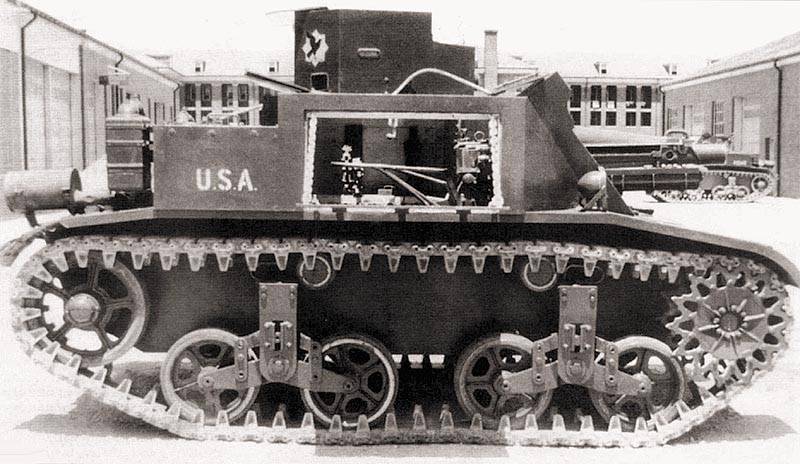
Self-propelled artillery installation Т3, side view with an open side hatch
In mid-June 1940, tests of weapons began, the results of which, as it turned out later, determined the fate of the entire project. Performing the first shooting, the testers were supposed to make 40 shots at a conventional target from a distance of 1800 yards (1,65 km). Accuracy of shooting was acceptable, but the first shooting allowed to reveal a lot of other problems directly related to the design of the perspective ACS.
First of all, the unsuccessful design of recoil devices and guidance systems was manifested. A large recoil force constantly knocked the tip, which is why before each shot the commander of the car had to re-direct the gun. An additional factor affecting the rate of fire, was a relatively small mass of self-propelled guns. Combat weight less than 10 tons did not allow to effectively extinguish the entire recoil momentum. For this reason, after each shot, the T3 Howitzer Motor Carriage ACS shifted slightly.
The layout of the fighting compartment was extremely unsuccessful. For example, testers complained about the inconvenient location of the ammunition stack, which hampered the loading of the gun. No less inconvenient was the location of the panoramic sight. The authors of the project believed that both the driver and the commander would be able to use it, but in practice such use was extremely difficult. The driver could really use the sight and mechanisms for pointing guns, but only if the commander was in the back of the combat compartment, in the machine gun turret. Because of this, the T3 SAU could not simultaneously fire from the main and secondary weapons. In addition, if the driver was forced to fire a cannon, the self-propelled gun could not move.
All these factors led to an unacceptable reduction in the firing characteristics of the new self-propelled gun. Despite the high firepower of the gun, the actual rate of fire did not exceed three rounds per minute. In addition, the already uncomfortable position of the crew was aggravated by the absence of any ventilation of the habitable volume. For convenience, it was possible to open the hatches, but in conditions of battle it would be a real suicide.
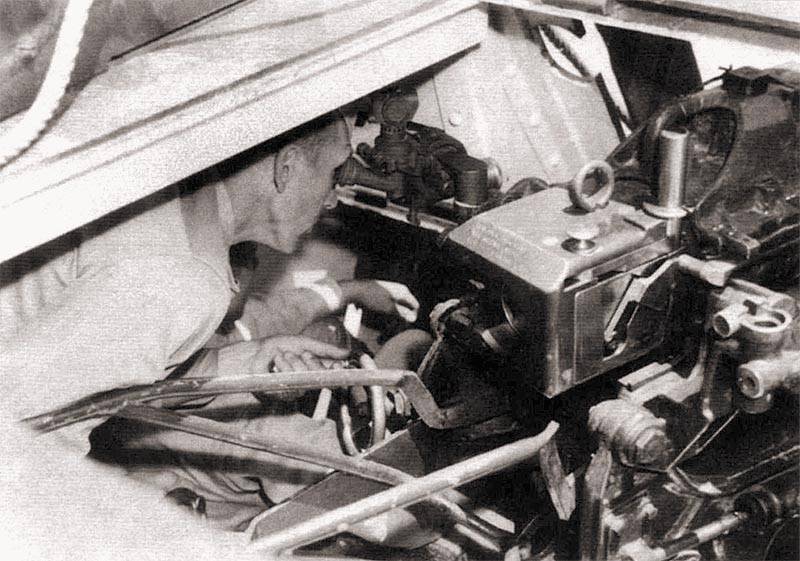
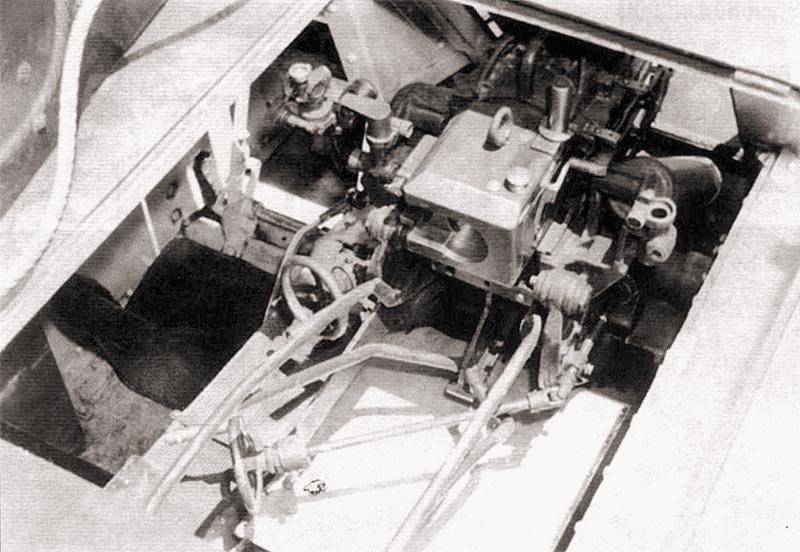
These two photos show how close the combat compartment of the T3 ACS was, and what efforts were required from the crew members
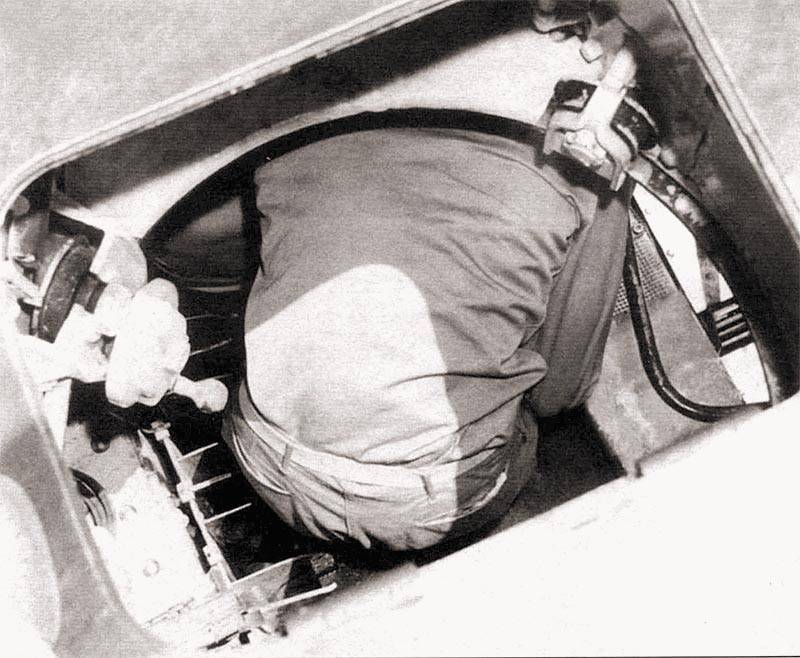
View from the top of the open hatch commander tower. In the center - the back of the commander of the ACS, bent over the gun. The commander, in addition to his main functions, performed the duties of a gunner and loader. The position in which he looks through the eyepiece of the panorama, in Russian can be called "neither this nor that" - half-sitting, half-standing
Acceptable performance and firepower could not outweigh the low rate of fire and the inconvenient layout of internal volumes. According to the test results, the US Department of Defense issued its verdict: to stop all work on the project because of its lack of prospects. The idea of placing howitzers on a tank chassis was recognized, but the light tank M1 was considered unsuitable for such use. In the future, American engineers created a new project of self-propelled artillery, built in accordance with this concept. As a basis for the new self-propelled T18, the light tank M3 was chosen. When reworked in the SAU, this tank received an updated hull with a large-sized combat compartment, which made it possible to avoid the drawbacks of the T3 self-propelled gun.
Despite a number of drawbacks and an inglorious ending, the T3 Howitzer Motor Carriage project allowed American armored vehicles designers to test a new idea for creating self-propelled artillery. As further demonstrated story self-propelled guns of the United States and other countries, the proposed approach proved to be correct and became the standard in the design of such equipment.
On the materials of the sites:
http://otvaga2004.ru/
http://wwiivehicles.com/
http://shushpanzer-ru.livejournal.com/
Information